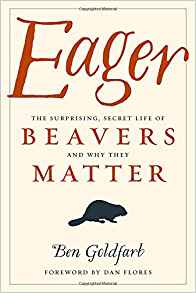 Beth talks with author Ben Goldfarb about his new book, amusingly titled Eager: The Surprising, Secret Life of Beavers and Why They Matter. You’ll gain a better understanding of beavers’ myriad skills, and want to restore beaver populations in our local environments. Spoiler alert, we’ll have copies of his book available during the pledge drive show on Oct. 16.
Beth talks with author Ben Goldfarb about his new book, amusingly titled Eager: The Surprising, Secret Life of Beavers and Why They Matter. You’ll gain a better understanding of beavers’ myriad skills, and want to restore beaver populations in our local environments. Spoiler alert, we’ll have copies of his book available during the pledge drive show on Oct. 16.
Host: Maeve Conran
Producer: Beth Bennett
Engineer: Maeve Conran
Executive Producer: Susan Moran
Listen to the show:
Podcast: Play in new window | Download (Duration: 26:23 — 30.2MB)
Subscribe: RSS





 The National Wildlife Federation just released its report, Safeguarding Summer: From Climate Threats to Iconic Summer Experiences. This report chronicles the latest scientific findings on these trends and shows how we can engage on these issues to save our summers now and for future generations. This week Beth interviews the lead author, Frank Szillosi, about the findings and predictions. You can find the entire report at the NWF website, https://www.nwf.org/Home/Latest-News/Press-Releases/2018/08-15-18-Safeguarding-Summer.
The National Wildlife Federation just released its report, Safeguarding Summer: From Climate Threats to Iconic Summer Experiences. This report chronicles the latest scientific findings on these trends and shows how we can engage on these issues to save our summers now and for future generations. This week Beth interviews the lead author, Frank Szillosi, about the findings and predictions. You can find the entire report at the NWF website, https://www.nwf.org/Home/Latest-News/Press-Releases/2018/08-15-18-Safeguarding-Summer.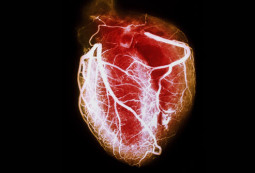
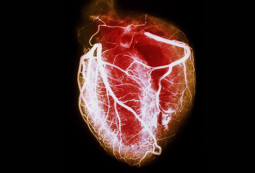

 This week’s How on Earth guest, Dr Doug Seals, researches vascular aging. Several events occur as we age that conspire to damage blood vessels, culminating in what is popularly known as hardening of the arteries. But lifestyle modifications to exercise and diet can prevent and even reverse this trend. This week’s show gives background and mechanisms of this aging; next week’s episode will delve more deeply into solutions and interventions. To find out more about the Seals’ lab research visit their website: https://healthyagingproject.org/
This week’s How on Earth guest, Dr Doug Seals, researches vascular aging. Several events occur as we age that conspire to damage blood vessels, culminating in what is popularly known as hardening of the arteries. But lifestyle modifications to exercise and diet can prevent and even reverse this trend. This week’s show gives background and mechanisms of this aging; next week’s episode will delve more deeply into solutions and interventions. To find out more about the Seals’ lab research visit their website: https://healthyagingproject.org/
 This week on How on Earth, Beth talks to author Dr Marc Bekoff, Professor Emeritus, CU Boulder. His new book has the wonderful title of Canine Confidential. If you enjoy dogs, dog parks, and watching them interact with each other and people, you’ll enjoy this book!
This week on How on Earth, Beth talks to author Dr Marc Bekoff, Professor Emeritus, CU Boulder. His new book has the wonderful title of Canine Confidential. If you enjoy dogs, dog parks, and watching them interact with each other and people, you’ll enjoy this book!
 Two epidemics sweeping the developed world are Type 2 diabetes and Alzheimer’s disease.This week on How on Earth, Beth interviews Dr Steven Masley about his book, The Better Brain Solution in which he explores the connection between diet (and other lifestyle factors) and these diseases. Based on the results of numerous clinical trials he has conducted in his medical practice, Masley presents a program to prevent and possibly reverse this metabolic syndrome. You can find his book and other information at
Two epidemics sweeping the developed world are Type 2 diabetes and Alzheimer’s disease.This week on How on Earth, Beth interviews Dr Steven Masley about his book, The Better Brain Solution in which he explores the connection between diet (and other lifestyle factors) and these diseases. Based on the results of numerous clinical trials he has conducted in his medical practice, Masley presents a program to prevent and possibly reverse this metabolic syndrome. You can find his book and other information at 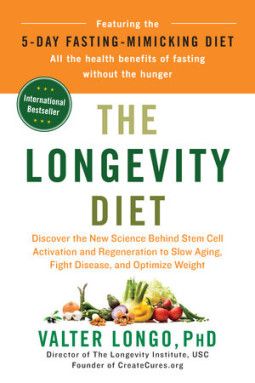
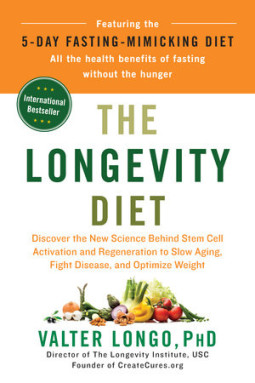
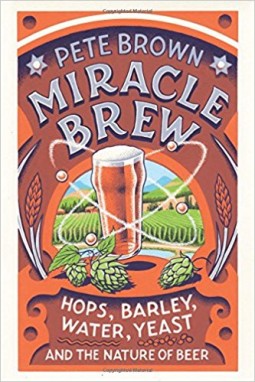
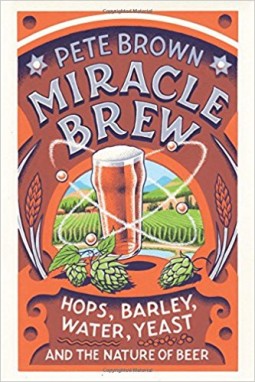

 This week on How on Earth, Beth finishes the interview with Miriam Kalamian, author of Keto for Cancer. This encyclopedic volume lays out the groundwork for using a ketogenic diet to treat cancer. But, as the author points out, the diet, which starves cancer cells, should be used in conjunction with other therapies. To see the book, go to https://www.chelseagreen.com/keto-for-cancer; to see Miriam’s website go to https://www.dietarytherapies.com/
This week on How on Earth, Beth finishes the interview with Miriam Kalamian, author of Keto for Cancer. This encyclopedic volume lays out the groundwork for using a ketogenic diet to treat cancer. But, as the author points out, the diet, which starves cancer cells, should be used in conjunction with other therapies. To see the book, go to https://www.chelseagreen.com/keto-for-cancer; to see Miriam’s website go to https://www.dietarytherapies.com/